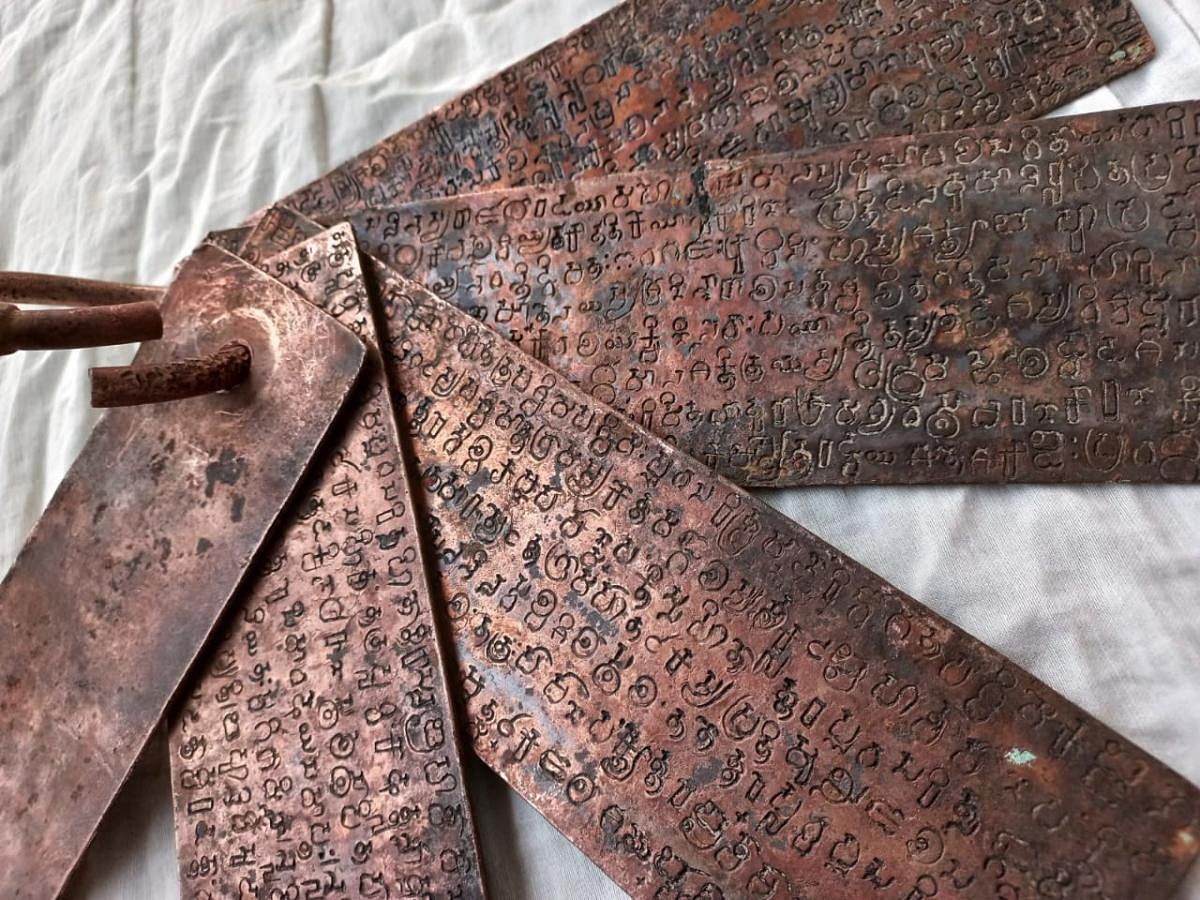
Getting Kannada the status of a classical language would have taken a long time, if not for the copper plate inscriptions discovered at Mudiyanur village of Duggasandra hobli in Kolar district.
In 2016, the Madras High Court dismissed a petition filed by Chennai-based advocate R Gandhi in 2008, against granting classical status to Kannada. While disposing the plea, the court considered the inscriptions engraved on five copper plates.
These plates were placed before the court as supporting documents against the petition. The same order also removed the hurdles in the way of Telugu and Malayalam attaining classical status.
But there are differing views regarding the antiquity of the plates. They are currently in the possession of Dr Dakshina Murthy, an Ayurvedic doctor, though he does not know who the plates originally belonged to.
“A neighbour handed over the plates to my relative K Venkatarama Shastry, and left the village decades ago. They were passed on to my grandfather Nyshadam Krishna Shastry and then to my father M K Subbaiah,” Murthy recalls.
He adds, “A few paleographers believe that the script used on the plates belong to the pre-old Kannada time, possibly even before the Halmidi inscription of 450 CE. It shows that the grant was made on Shuklapaksha Somavara (Monday) in 261 CE. It refers to Kottamangala village in Mulbagal taluk in Kolar district.”
Details of the inscription were published in Epigraphia Carnatica, Vol X, Inscriptions in Kolar District, compiled by British historian and archaeologist B Lewis Rice.
According to Rice, the words found in the plates are ancient and existed much before old Kannada. He identified the year of the issuance as 338 CE.
Copper-plate inscriptions
The copper-plate inscriptions are basically records of grants of villages, plots of cultivable lands or other privileges to private individuals or public institutions by the dynasties.
Of the ten sides of the plates in question, there are inscriptions on seven sides, while three are blank.
Notwithstanding their content, the copper plates themselves appear to have been issued during the period of Bana dynasty’s ruler Vadhuvallabha Malladeva Nandivarma in the ninth century from Avani.
“The pre-old Kannada letters engraved use Sanskrit to express the grant of a village. The 52-line inscription has all features of a classical status. It has Nandi, the official emblem of the Banas, who believed they were the descendants of Mahabali,” Prof K R Narasimhan, a leading epigrapher and a historian, points out.
Initially, it was believed that the grants were made roughly around 338 CE, before the Halmidi inscription in 450 CE. The inscription highlights a close relationship between Kannada and Sanskrit, which is why some experts believe that the inscription dates back prior to 450 CE.
“However, after a detailed study, the experts concluded that the grant was made around fourth century,” he says.
Narasimhan has one theory about the plausible discrepancy in dates: “For some reason, rulers in those periods would engrave the same inscription on both stone and copper plates. Records of the grant were possibly engraved on stone, which could then have been copied on copper plates about four or five centuries later,” Prof Narasimhan explains.
The inscription records the grant of Mudiyanur village to a group of 25 Brahmins, known as ‘Samanya Charanaru’, to carry out the vedic tradition and rituals. It also specifies the boundary of the village, referring to various hillocks and lakes in the neighbourhood.
“It emerges based on the inscription that Nandivarma was the ‘ruler of 7.5 vishaya (country) containing 12,000 villages’ in the Andhra Mandala,” he says.
“The vedic tradition in and around the village was carried out from the eighth century till the 16th century, which is evident based on the copper plate inscriptions issued during the period of Vijayanagara ruler Krishnadevaraya,” he reveals.
Dr Murthy says he has received several offers for the plates but he has rejected them.
“Some had even quoted over Rs one lakh for the plates, but I rejected it realising their importance,” Dr Murthy says.
“The Department of Epigraphy officials collected the plates for a study for 15 days after inking an agreement with me. The officials returned it safely,” he adds.